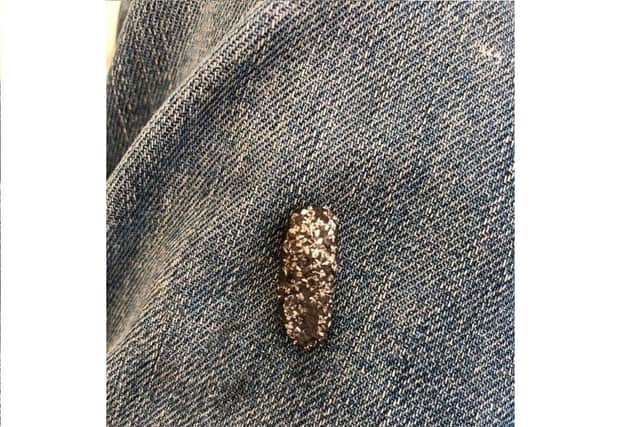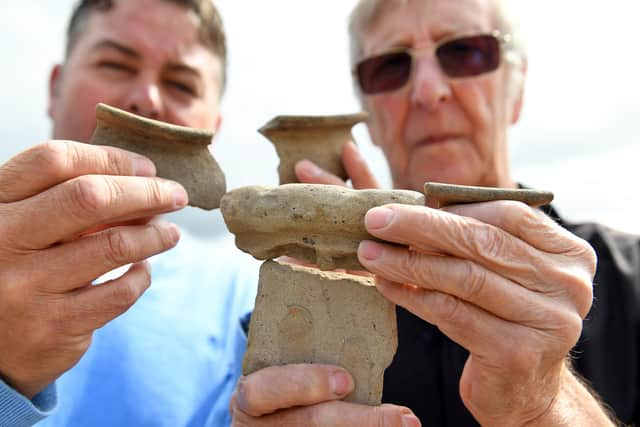Amateur Archaeologists find 'extraordinary' Roman artefact dubbed 'paranormal paracetamol' near Havant
and live on Freeview channel 276
They think the silver find is predicted to date back to the Emperor Constantine (306-337 AD) and is suspected to have healing properties.
Waterlooville resident Peter Beasley, 80, and fellow enthusiast Lee McGowan, found it while metal detecting near Rowlands Castle.
Advertisement
Hide AdAdvertisement
Hide AdMr Beasley said in all his years of ‘history hunting,’ he has never seen anything like it.


He told The News: ‘We’re calling it the paranormal paracetamol, it’s incredible.
‘It’s made of silver, about three quarters of an inch long and is shaped like a paracetamol tablet.
‘We found it at a site which we suspect to be a Roman temple, and the coins coming out of there date back to Constantine, who brought Christianity to the Roman empire.’


Advertisement
Hide AdAdvertisement
Hide AdMr Beasley described the ‘extraordinary’ and ‘mind-boggling’ artefact as priceless.
After cleaning and recording the artefact, which was found five weeks ago, the treasure hunters found the symbol of the Chi Rho.
The Chi Rho sign is intersecting Greek letters which spell out Christ.
Lilies and daisies are also engraved on the artefact, which Mr Beasley said is common symbology for the Virgin Mary.
Advertisement
Hide AdAdvertisement
Hide AdConstantine converted to Christianity during the battle of the Milvian Bridge in 312 AD.
According to ancient historians, the emperor and the whole Roman army saw a miracle where a cross of light covered the sun.
Mr Beasley said the iconography on the artefact corresponds to the event.
He suspects people used it to cure ailments, as Romans thought Christ protected them from danger.
Advertisement
Hide AdAdvertisement
Hide AdHe added: ‘There are Greek letters that depicted the name Christ on the tablet, which was seen by thousands of Roman soldiers before a battle.
‘That miracle is supposed to have marked the beginning of Roman Christianity.
‘We’ve come to the conclusion that people would have swallowed it to cure them of sickness.’
The amateur archaeologist explained the artefact was jet black when it was found.
Advertisement
Hide AdAdvertisement
Hide AdHe predicts that was due to the oxidisation of the silver, or it was preserved in a fossilised coprolite.
Mr Beasley has an extensive history of finding treasure, having previously uncovering a collection of Roman coins in 1996.
They were sold to the British Museum for £103,000.
Mr Beasley and Mr McGowan say they have also discovered 800 ‘offering coins’ at the site of the tablet, and they want to research the area in more detail.
Mr Beasley said this could lead to an archaeological dig
He commented: ‘The find is so small and the detail is incredible and beautiful.
‘There is something going on at that site.
Advertisement
Hide AdAdvertisement
Hide Ad‘We’re going to very carefully record everything and we’ll see where we go from here.’
A message from the Editor, Mark Waldron
Subscribe here for unlimited access to all our coverage, including Pompey, for just 26p a day.
Comment Guidelines
National World encourages reader discussion on our stories. User feedback, insights and back-and-forth exchanges add a rich layer of context to reporting. Please review our Community Guidelines before commenting.
